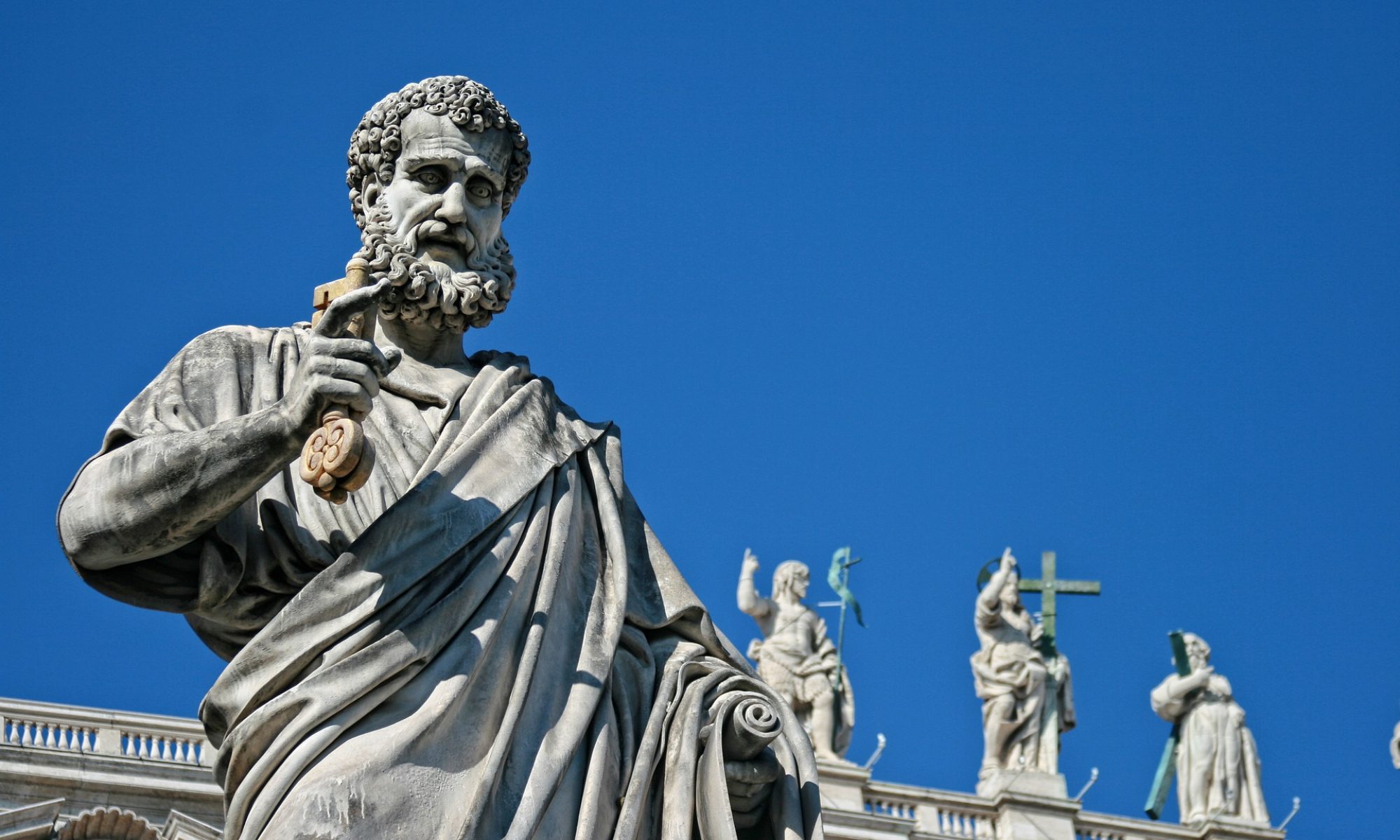July 22nd, 2013
There was a time when the Roman Catholic Church had one Pope and an Anti-Pope, fighting against each other. There was even a time when three Popes contended for the office with each of them claiming to be the only true and lawful Pope. These difficult times occurred between the Middle Ages and the early Modern era. Since then, the Roman Catholic Church has always been sure to emphasize that it is the one and only Church, basing this on the fact that it is ultimately governed by one head, i.e. the Pope. The one and only Pope has always been thought of as being an inherent and necessary feature of the oneness and unity of the Church.
The resignation of Pope Benedict XVI in February 2013 has opened a new era. The election of Pope Francis a month later gave the Roman Catholic Church its new leader, but with the former one still living. Since May 2nd both Popes, the reigning one and the emeritus, have lived shoulder to shoulder in the Vatican state in the shadow of Michelangelo’s cupola. Tomorrow’s historians will perhaps consider these facts as watershed events in the historical and theological development of Catholicism. Some critical voices can be heard here and there in conservative circles that envisage the long-term significance of such an innovation. Canon law experts are adamant that the Church still has only one Pope. This is canonically true but it is not the whole truth. Here are some tentative reflections.
Retirement Scheme
The historical pattern of maintaining the unique institution of the Papacy has been to elect a new Pope once the old one had died. True, Canon Law provides for a Pope to retire, but this provision has never been applied in the modern era and was created only for exceptional cases of sudden and unrecoverable sickness. Benedict XVI, however, did not apply it in such an extraordinary circumstance, but instead as if it were an ordinary retirement provision for an aging Pope. Although old and frail, Ratzinger still enjoys relatively good health. He walks, speaks, writes, and is not severely handicapped to the point of not being able to be autonomous in moving around and taking care of himself.
More substantially, the papacy was considered as a life-long office, a “cross” to be carried for the rest of one’s life, its terms coinciding with election (the beginning) and death (the end). The second term is now under question and an addendum, i.e. resignation, has been implemented. A retirement scheme was introduced by Benedict, as if the Papacy were like any other elected role. The exceptionality of the Papacy is now less exceptional and more comparable with other offices. The Pope is less of a once-and-for-all “divinely appointed” figure and more of a pro-tempore (for a time), provisional officer of a religious institution.
Cohabitation
New issues have been raised by Benedict’s retirement. How should a retired Pope be addressed in terms of his titles? How should he dress? Where should he live? What public profile should he have, if any? Ratzinger chose to live in the Vatican and committed himself to keeping a low profile, not travelling, not speaking, and not appearing much. The lauded beginning of Francis’ papacy has now overshadowed the old course. The question remains, however. What if a retired Pope begins to be vocal? What if he intervenes in the affairs of the Church? What if he becomes the leader of a church party? This perhaps will be not the case with Benedict, but now that the door has been opened, who can predict all the possible outcomes for future retired Popes?
The first fruit of the cohabitation was the recent release of the encyclical Lumen Fidei (Light of Faith). It was signed by Francis as his first encyclical but is largely dependent on Benedict XVI’s work. Other measures will be somewhat co-authored. Benedict tried to introduce changes in the curial machine after financial, sexual and administrative scandals undermined the credibility of the institution. It is certain that he spoke about these issues with Francis, hoping that he would take action. Meanwhile, Benedict is in the heart of the Vatican, vigil and alert to what his successor is doing.
Why a Pope?
Having two living Popes at the same time has the potential to raise further questions about the divine nature of the Papacy. Will it, for example, trigger a long-term revision of the institution? The Papacy started as a historical leadership structure modeled after the Roman imperial pattern. Popes began to function as religious emperors as the Roman ones began to fade away. It was subsequently given a dogmatic status to the point of defining it as a de iure divino (according to divine law) office. Vatican I (1870) divinized the papacy by making the pope “infallible” when he exercises his teaching role. Now, Ratzinger’s resignation “humanizes” it by showing that this office is like any other human responsibility, i.e. temporary and subject to human weakness. Moreover, the Roman Catholic Church has a reigning Pope and a retired Pope living next to each other. Meanwhile, Pope Francis has inaugurated a style that seems to be light years away from the imperial pattern of the last 1500 years.
The ultimate question, however, is not the number of Popes, nor the contrast between a royal and a sober style. The hope is that all this will cause many Catholics to reflect on the nature of the Papacy beyond traditional dogmatic assertions and superficial apologetic arguments. Is it not the time to launch a radical re-thinking of the Papacy in light of Scripture?

